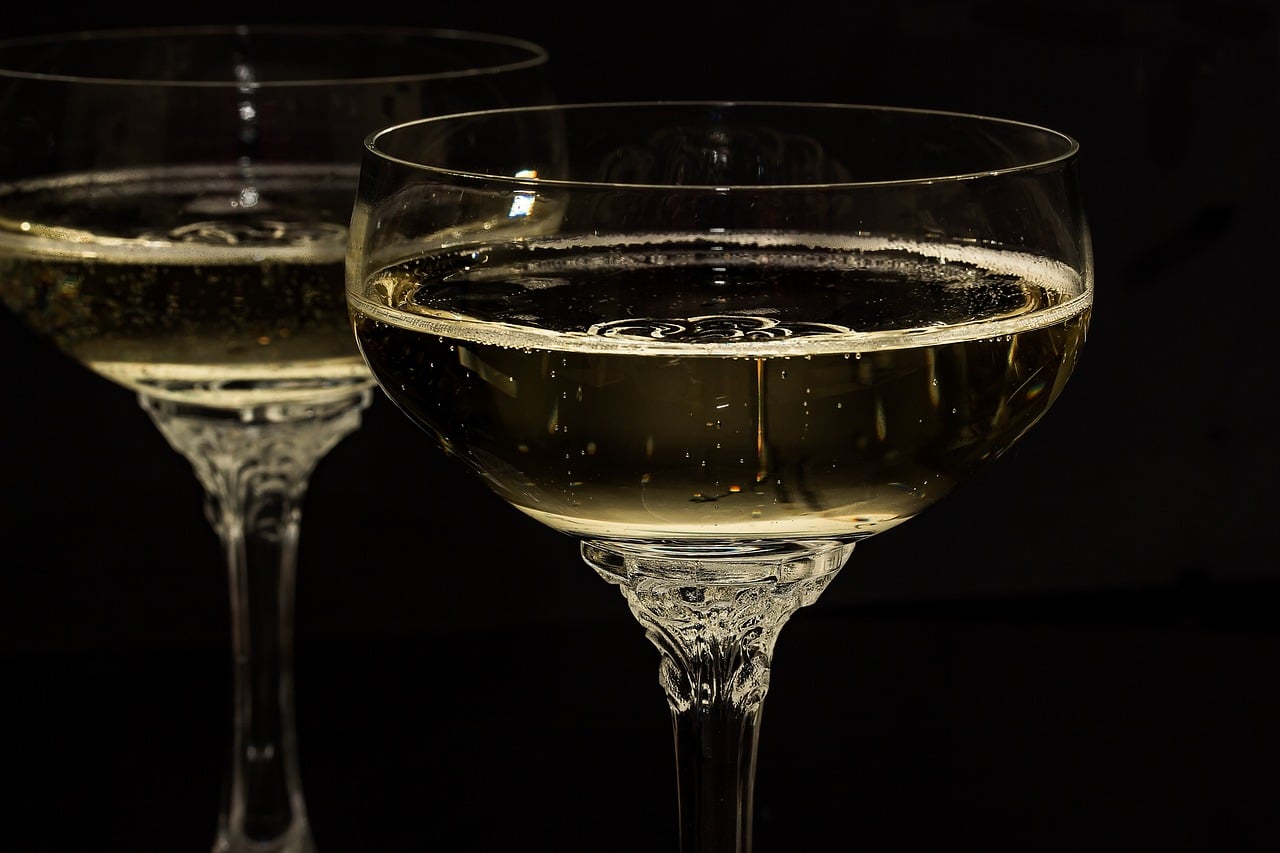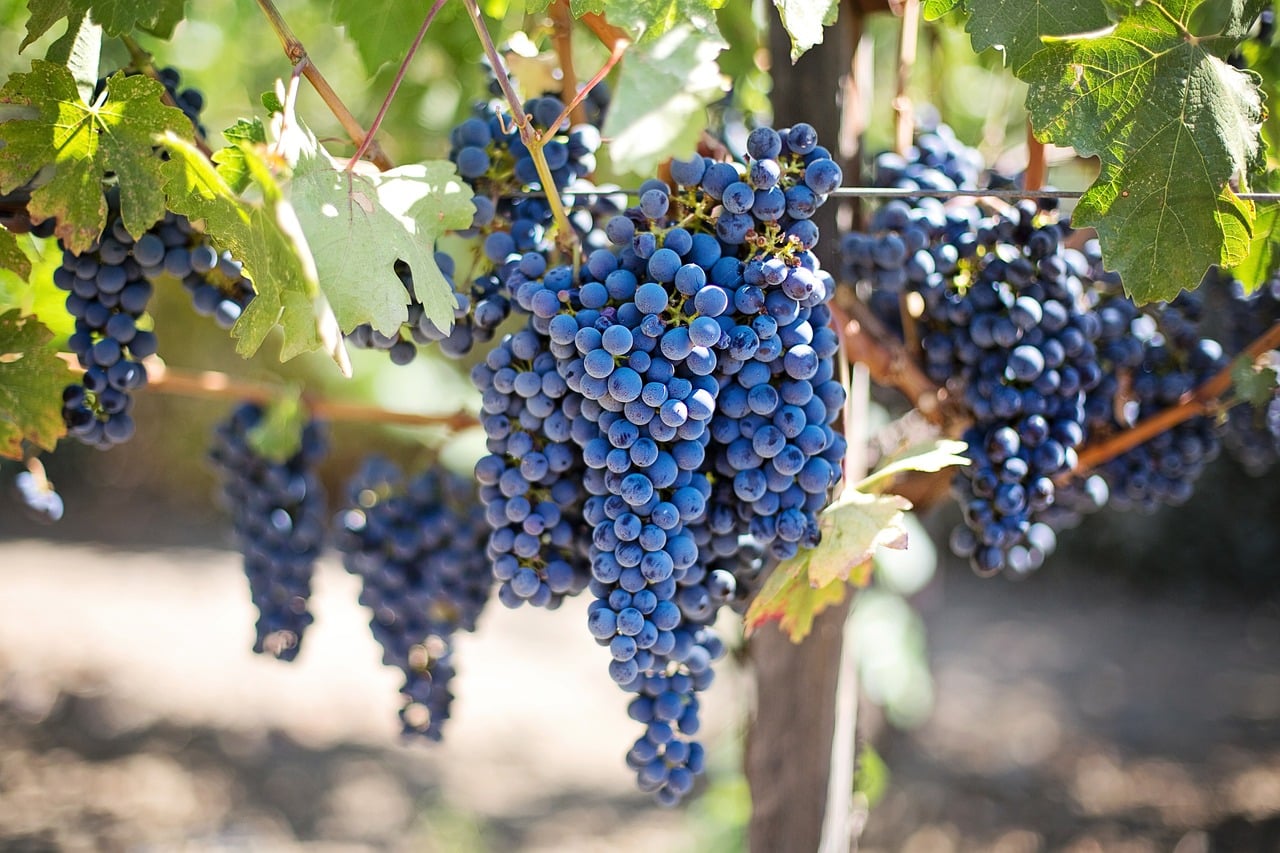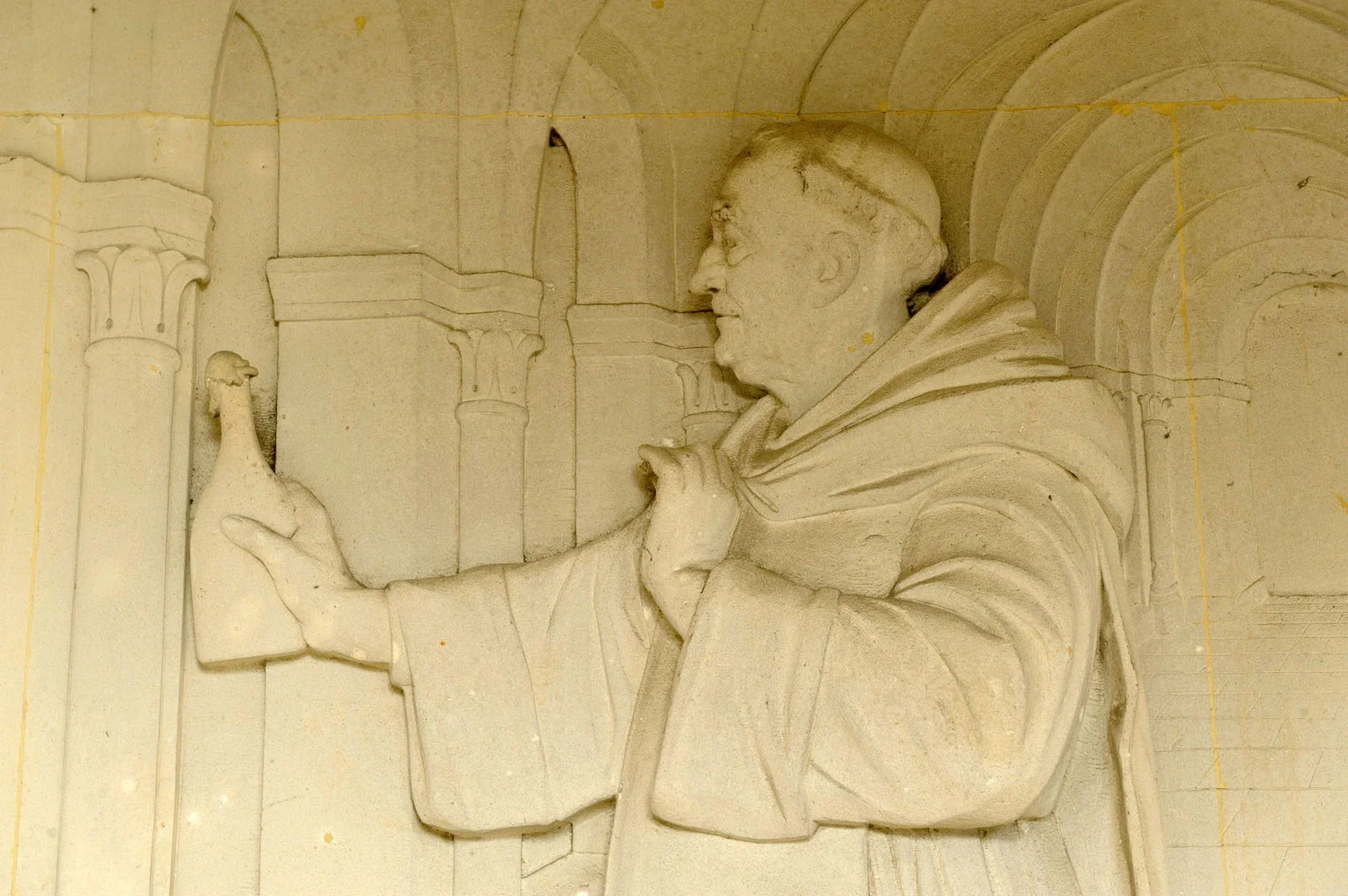
Who invented the champagne? When it was invented? And the most remarkable thing, did you know that it was a monk who did it and that his name was Dom Pérignon, like the famous brand?
We often talk about men of faith who have contributed to progress of humanity thanks to their study or their scientific discoveries. Today we tell you the story of another man of faith who, again through his own study, has also contributed to progress of humanity in a different form and field, but no less relevant for that. How did he do it? inventing champagne. Does it seem little to you?
Where was champagne invented, in England or in France?
Although not everyone agrees (later we will see that there is another version), the history of the champagne and sparkling wines start at the hautvillers abbey, one of the oldest Benedictine abbeys in the world. The building is located in the upper valley of the Marne, in the northeastern part of France, about 150 kilometers from Paris. Near Reims, in whose great cathedral the kings of France were crowned. The region of Champagne It was in the past, and is today, one of the selected places in the heights where fine grapes for winemaking are grown.

Wines produced in the Champagne region were long the favorites of the kings of Paris. We know that, until around 1500, Champagne wines still had no bubbles and they competed strongly with the wines of Burgundy, often more successful because they were easier to transport across the Marne a Paris. Nevertheless, late fifteenth century, the weather in Europe became colder. This drop in temperature managed to profoundly upset the wine industry.
The change in temperature transformed wine production
In the northern hemisphere, at the end of the fifteenth century, temperatures dropped suddenly. Across Europe, large bodies of water froze, including major landmarks and transportation routes like the Thames and the canals of Venice. in the region of Champagne, the weather suddenly turned out to be colder than usual just at the time of vintage. Due to the low temperatures at the time of vinification, the yeasts spread over the clusters to transform the sugars present in the must into alcohol no longer had enough time to carry out their task.
To have a complete fermentation it is necessary to have a temperature higher than 20° C. After sudden cooling, the fermentation process began to break down before all the sugars had been transformed into alcohol. With the arrival of spring, fermentation resumes but, this time, inside the barrels or other containers in which the must had been bottled. The second fermentation produced an excess of carbon dioxide (carbon dioxide) that was trapped in the containers generating a slight effervescence... This is how champagne was born although there are several versions, as we will see below.

The French aristocracy did not like champagne
The French aristocracy did not appreciate this effervescence, judging it as a symptom of poor winemaking. The wine market of Champagne gradually declined and eventually lost ground entirely to the wines of Burgundy. The wines of Champagne They then went through two centuries of dark times until the Catholic Church, who had large interests in the vineyards of Champagne and was experiencing a significant reduction in revenue, he decided to address the issue. In 1668 , the Church entrusted a 29-year-old monk, Dom Pierre Perignon the task of solving the problem of bubbles and producing still wines (not sparkling) like those that champagne makers obtained with such success in the past. Dom Pierre Pérignon, like new cellar master of the abbey of Hautvillers, he began to develop various empirical methods to reduce (but not completely prevent) fizz.
Remove the bubbles from the wine and then finish leaving them
Meanwhile, as Dom Pérignon worked to remove the bubbles from the Abbey's wines, people's taste began to change. “Sparkling wine” became fashionable and suddenly spread to high society. In England during the reign of Charles II (who ruled from 1660 to 1685 at the time of what has also been remembered as Merry Olde England, "happy old England") a sophisticated society had recently been born that included some connoisseurs of sparkling wine.
Christopher Merrett, forerunner of Dom Pérignon champagne
It appears that sparkling wines were already in existence in England in some form at least two to three decades before they were produced for wider consumption in the Champagne region of France. In December 1662 (six years before Dom Pérignon became cellar master at Hautvillers Abbey), an Englishman named Christopher Merrett he had illustrated a paper on the technique of sparkling wine production for the newly born Royal Society of London.
Regardless of the French discovery of champagne, due to the sudden cold that had affected the country, Merret had discovered that the sugar addition He made wines effervescent and increased their alcoholic strength, as precisely illustrated in his work. Consequently, in England, many noblemen would have ordered still (not sparkling) wine in casks, to then add a certain amount of sugar, and then bottle it. The British were used to adding flavors to food and drinks, but in this case, they added sugar not for flavor but for the specific purpose of making sparkling wines and increasing their alcohol content.

Champagne, or sparkling wine, went from England to France
Back in France, also the members of the royal court of Versailles in the time of Louis XIV began to appreciate the bubbles in their wine. At the end of the XNUMXth century, Dom Pérignon was ordered to reverse his efforts and develop methods to increase the effervescence of wine. This change in taste must have made Dom Pérignon very happy; in fact, it is said that, when he first tasted a wine that had become very effervescent by chance, he called out to the other monks saying: "Come quickly, brothers, I'm drinking the stars!". Although Dom Pérignon was not the only one to make a still wine sparkling, he devoted himself very effectively to the development of new techniques to increase the effervescence of wines, until the creation of champagne as we know it today.
Who is Pierre Pérignon, the father of champagne?
Let's talk about Pierre Perignon, also known as Dom Pérignon (hence the name of the well-known brand of champagne), or the benedictine monk who invented champagne The discovery is due partly to chance and partly to the wisdom he derived from his role as "attorney" from the vineyards of her convent. You can read a very complete version (and in French) of his story in the archive of la Union des Maisons de Champagne, which has brought together the main champagne-producing houses since 1882.
Pierre Perignon, known as Dom Perignon, was a French abbot. Raised in Sainte-Menehould, in the Champagne-Ardenne region, he grew up in close contact with wine, working in the vineyards of his father and his uncles. After becoming a priest, at the age of 30 he became treasurer and responsible for the vineyards of the Benedictine monastery of Saint-Pierre d'Hautvillers: an important task for a structure that essentially supported itself by selling its own wine.

A solicitor who would go on to be the inventor of one of the world's best-known drinks
In fact, over the years, Pierre Pérignon had dedicated himself to selection of vines (and the methods to cultivate them) necessary for the creation of champagne. The french monk, born in 1638 not far from the champagne region, after his ordination he entered the monastery of Saint-Pierre d'Hautvillers where he lived until his death in 1715.
the monastery of Saint-Pierre d'Hautvillers was maintained only thanks to Donations of the population and the sale of some products made by the monks (including, in fact, the wine) and the task of Dom Pierre Pérignon was that of "procurator", that is to say, administer the affairs of the abbey and take over the vineyards. He held this position for 47 years, being reconfirmed each year as proof of the satisfaction of the abbots with the work of Dom Pierre.
The invention of champagne
As we have commented, legend has it that Dom Perignon invented the champagne but there are two versions of the facts.
The first says that, as is often the case with great inventions, the birth of champagne was fortuitous. In other words, it is said that, after bottling a few bottles of white wine, Dom Pérignon realized that some of them had burst. The first champagne was called "Wine of the Devil" fearing that the bottles would suddenly explode, splintering glass in all directions. The abbot thus discovered that there was a way to make sparkling wine and discovered the second fermentation, that is, the process by which carbon dioxide is developed after refermentation in the bottle.
The second version says that Dom Perignon, a great experimenter, added to purpose sugar and flowers to bottled white wine and checked how, after refermentation, it could develop bubbles.
The secret is in the selection of vines
What makes this French Benedictine monk really worth remembering is the selection of the vines most suitable for champagne (Pinot noir, Chardonnay and Pinot Meunier). which was possible thanks to his deep knowledge of the grapes of the area in which it was found. In fact, another version of the story and the discovery of champagne says that it seems that there were already methods to make sparkling wine and that Pierre Pérignon had learned them from others during a trip. Whether one version or another, it is clear that the main author of the discovery was the monk Pierre Pérignon.
His merit, then, would be that of having developed a method to arrive at what we know today as champagne, cava or champagne. But that's not all, Dom Perignon devoted himself to "science of wine" before oenology became a discipline in its own right. Until that time, wine production methods were derived empirically rather than "scientifically".

champagne vines
We do not know which of these versions is the true one. The latest research seems to show that sparkling wines existed in the Champagne region long before the birth of Pérignon. And that he, during a trip to the Saint-Hilaire abbey, had discovered a winemaking method to make sparkling wine. The truth is that Dom Perignon, thanks to his deep knowledge of the grapes of the area, had the merit of selecting the most suitable vines for the production of Champagne: Pinot Noir , Chardonnay y Pinot Meunier. He also introduced today's cork stoppers and worked to perfect the method of production. Helping to institutionalize world excellence, which is still produced today following his advice, not only by the label that bears his name, but by all the most important wineries in the world.
The advice of Dom Pérignon
In particular, among the warnings issued by Dom Pérignon before his death in 1715, there are these precious indications:
- opt for Pinot Noir, with black berry grapes, because white berry grapes give the wine a latent tendency to refermentation;
– ensure that the vines never exceed one meter in height and that they produce few grapes;
– harvest carefully, making sure that the grapes remain intact, attached to the stems and fresh, discarding those that are broken or bruised;
– take the grapes to the press by hand, avoiding the use of animals that can disturb and ruin the grapes;
– opt for berries small, which are richer and tastier than the large ones;
– work early in the morning and take advantage of stormy days when it is hot;
– Never press the grapes with your feet and avoid maceration of the pomace in the must.
